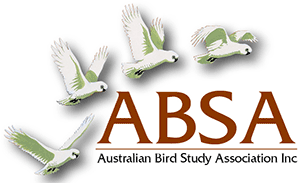Manuscripts relating to any form of avian research will be considered for publication. Field studies are preferred, whether they involve identification of individual birds, as by banding, or are on unmarked individuals. Some broad areas of research which do not necessarily require individual identification include morphometric analyses, techniques, species diversity and density studies, as well as behavioural investigations. Behavioural, plumage and breeding studies that are conducted in captivity are also welcome, but must provide basic ornithological knowledge rather than just having avicultural interest.
Manuscripts are classified as either major articles (more than 1,500 words) or minor articles (500 to 1,500 words). Minor articles need no summary. Shorter notes relating to almost any aspect of ornithology are welcomed, but must adhere to the aims of the Association. Species lists or sightings which are not discussed in relation to historical evidence or scientific parameters are not suitable for publication in Corella. Authors proposing to prepare Seabird Island items should contact the Assistant Editor Seabird Islands, and obtain a copy of the guidelines.
The copyright of material published in Corella is assigned to the Australian Bird Study Association.
Contributors are requested to observe the following points when submitting articles and notes for publication in Corella.
Manuscripts
A guide to the format required for tables, figures and manuscripts can be attained by reference to a recent edition of the journal and more specifically to the Publication Style found on the ABSA website.
Articles or notes should be sent via email to the editor as a .doc or .rtf file. Double spacing is required. Margins of not less than 25 mm width at the left-hand side and top, with similar or slightly smaller at the right-hand side of the page are required.
All pages of the manuscript must be numbered consecutively, including those containing references, tables and captions to illustrations, the latter placed in after the text. No underlining and no abbreviations should be used within the text. Values should be given in SI units e.g. 100mm, 20 km.
The Style Manual for Authors, Editors and Printers (6th edition 2002; John Wiley & Sons Australia, Ltd.) is the guide for this journal. Spelling generally follows the Macquarie Dictionary. Authors are urged to conduct a spelling and grammar check before submitting their manuscript.
Nomenclature and Classifications follow:
Working List of Australian Birds (Version 4.3)
Proper nouns, particularly place and bird names must commence with a capital letter.
Headings are as follows:
HEADING – capitals and bold (e.g. RESULTS)
Sub Heading – lower case and italics (e.g. Ecology)
Referencing:
References to other articles should be shown in the text – ‘. . . Bell and Ferrier (1985) stated that . . .’or ‘…. this is consistent with other studies (Jones 1983; Bell and Ferrier 1985).’– and in the Reference Section as:
Bell, H. L. and Ferrier, S. (1985). The reliability of estimates of density from transect counts. Corella 9: 3-13.
Jones, J. C. (1983). Sampling Techniques in Ornithology. Surrey Beatty and Sons, Chipping Norton, NSW.
Figures (Maps and Graphs) and Tables:
The printable area of the page is 18 cm x 27 cm; double column figures/tables will be 18 cm across; single column figures/tables will be 8.5 cm across; widths between one column and double column can also be accommodated.
The captions for figures should be typed up onto a page separate from the figure.
Maps
Maps should be clear and relevant to the study and can be submitted in a variety of formats (.tif, .eps, .pcx) but the recommended one is a high resolution .jpg file (colour is acceptable). In some instances simply listing the latitude and longitude may suffice instead of a published map. Maps should only show necessary information. Excessive labelling (including names of towns, roads, rivers) will clutter the figure making it difficult to locate key place names. Photocopies of original hand-drawn maps are not suitable for publication. They should be submitted only initially. When the paper is accepted for publication, the originals must be submitted so that they can be scanned into an appropriate electronic format.
Graphs
Lines should be thick and dark and any fill used should show a clear distinction between sets of data (colour fills are acceptable). Borders around the graph and the key are not necessary. The recommended format is an .xls file – this makes it very easy to adjust fills, thickness of lines etc, if necessary.
Where possible, please present the figure at final size. Figures that seem satisfactory when they are large, can present problems when they are reduced. Remember that if the figure has to be reduced for publication the figure will reduce equally in all dimensions i.e. both width and height will reduce. This can cause some problems, such as: (i) Line graphs where the lines are very close together can lose clarity. (ii) The typeface will reduce. Please ensure that the final typeface size AFTER reduction will be a minimum of 10 times Times New Roman typeface.
Tables
The recommended format is an .xls file, but tables created in Word are acceptable. These should normally have a maximum size of one page, but larger tables can be accommodated, if necessary.
Editor
For more detailed information or assistance in the preparation of figures please contact the production editor corella@absa.asn.au.
